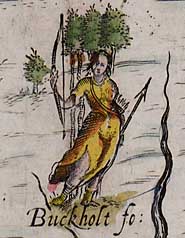|
|
Collaboration Work has also been done, discussions held, and ideas shared with a large number of other scholars. These include Prof. Richard Smith, Downing College, Cambridge, and Cambridge Population Research Group (forest demographies and linkages with the economies of forest and extra-forest communities); Profs. Christopher Dyer (the Whittlewood Project and medieval economies), Keith Snell (assistance for the poor in extra-parochial areas), and the late Harold Fox (the Wolds and other pastoral landscapes), Centre for English Local History, University of Leicester; Prof. Peter Edwards, University of Surrey, Roehampton (forests and forest-edge markets in the early modern horse trade); Dr Ruth Paley, Editor of the House of Lords Section of the History of Parliament (peers’ involvement in local Acts pertaining to forests and chases); Dr Leigh Shaw-Taylor, Jesus College, Cambridge, and European Commons Network (the value of forests and chases to marginal and marginalised groups); Dr Paul Warde, King’s College, Cambridge, and director of the project ‘Documenting Environmental Change’ (impacts of fuel production on woodland commons); Dr David Fletcher, London Metropolitan University (reports of the Parliamentary commissioners on forests, c. 1780 to c. 1800); Dr Elizabeth Baigent, University of Oxford (John Norden and his ilk: early modern cartographers of forests); Dr Sylvia Pinches (forest charities and customary rights); Dr Caroline Cheeseman, Merton College, Oxford (bio-geographic impacts of disafforestation); Dr Mandy DeBelin, Centre for English Local History, University of Leicester (transitional hunting landscapes); Dr Tom Williamson, Centre of East Anglian Studies, University of East Anglia (the rise of the country house and its parkland).
|
